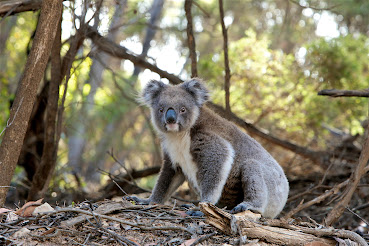Australia’s Quiet Fight: The Need to Protect Our
Unique Wildlife
There’s a serious situation happening in one of the world's stunning
places. If you look past the beauty of Australia’s landscapes—like its beautiful beaches, vast outback, and lush forests—you'll find that many of its
unique animals are struggling, and some are even disappearing.
These animals are a vital part of Australia's environment. When we lose
them, it impacts us more than we often understand. This is the story about
Australia’s endangered wildlife and the dedicated people working hard to save
them before it's too late.
More Than Just Friendly Faces
When you think about Australia, you probably picture kangaroos bounding
across the outback, koalas clinging to eucalyptus trees, and wombats waddling
around. But the truth is, many of these beloved animals are in danger.
Koalas were once so plentiful that they became a national symbol, but
now they are endangered in many areas across the country. Their homes are
shrinking, food sources are dwindling, and slowly but surely, their numbers are
going down—thanks to the loss of trees.
And koalas aren’t the only ones in trouble. The Northern Hairy-Nosed
Wombat, Leadbeater's Possum, and Greater Bilby are just a few more among the
many species sliding into silence.
Dr. Emily Croft, a conservation biologist, puts it bluntly: “We’re
losing creatures that exist nowhere else on Earth. Once they're gone, there’s
no bringing them back.”
The Real Causes behind Extinction
Australia has always faced tough conditions, but lately, climate issues
have ramped up. The devastating bushfires during Black Summer in 2019-2020 led
to the loss or displacement of over 3 billion animals—a mind-blowing number
that makes you stop and think.
But fires aren’t the whole story; it’s a mix of problems that has
created a really tough situation:
- Habitat destruction from logging and farming is taking away space for
these creatures.
- Invasive species like cats and foxes are hunting native animals.
- Urban sprawl is forcing wildlife into dangerous situations with
people.
- A warming planet is messing with breeding cycles, food availability,
and migration patterns.
These challenges don't just harm individual species; they shake the
balance of entire ecosystems.
The Everyday Heroes Stepping Up
Even with all this bad news, there’s a bright side—there are real
people out there fighting for our wildlife.
From volunteers who care for injured animals to Indigenous
conservationists preserving traditional practices to protect the land, many
Australians are committed to making a difference.
For instance, Wildlife Victoria, a nonprofit, helped over 100,000
injured animals in just one year. Another group, the Australian Wildlife
Conservancy, oversees more than 12 million hectares dedicated
to protecting
endangered species.
In the Northern Territory, Indigenous rangers are bringing back
cultural fire management techniques that lessen bushfire threats while
restoring nature—something those scientists are just starting to really
understand.
Uncle Jimmy Lawson, a Warlpiri Elder, puts it well: “We’re not just
saving animals. We’re protecting stories, spirit, and systems that are older
than time.”
Why Should This Matter to You?
You might be thinking, “I live in another country—what's it to me if a
possum is in danger in Australia?” But here’s the deal—this isn’t just an
Australian issue; it matters to everyone worldwide.
Australia is home to many species found nowhere else. Losing them means
making our planet a bit quieter, a bit less special. It’s about more than just
biodiversity; it’s the essence of our earth that’s at risk.
The same issues leading to wildlife loss—deforestation, climate change,
and expanding cities—are faced globally. What we learn from saving Australia’s
wildlife might just be the key to preserving nature everywhere.
How
You Can Make a Difference
You don’t need to be an expert or even live in Australia to help. Here
are some things you can do:
- Support trusted conservation groups: Whether it’s donating or simply
sharing their efforts (like Wildlife Victoria or WWF-Australia), every bit
helps.
- Travel responsibly: If you do visit Australia, choose to support
places that care for animals rather than exploit them.
- Stay informed and speak out: Keeping the conversation going can
really drive change.
- Reduce your own impact: Small changes in how you shop, travel, and
live can lead to big differences.
Wrapping
It Up
Australia's endangered wildlife might be out of sight, but they
shouldn’t be out of mind. These quiet protectors of nature don’t have a say in
politics or economics, but we do.
We owe it to the generations to come to ensure that kangaroo tracks,
koala calls, and bilby burrows still exist—not just as memories from a
long-gone world, but as parts of a thriving environment that we fought to keep
alive.


















